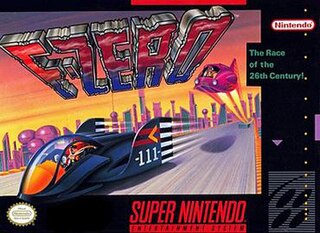
F-Zero is a 1990 racing game developed and published by Nintendo for the Super Nintendo Entertainment System (SNES). It was released in Japan on November 21, 1990, in North America in August 1991, and in Europe in 1992. F-Zero is the first game in the F-Zero series and was a launch game for the SNES. F-Zero was rereleased for the Virtual Console service on various Nintendo platforms and as part of the Super NES Classic Edition in 2017.
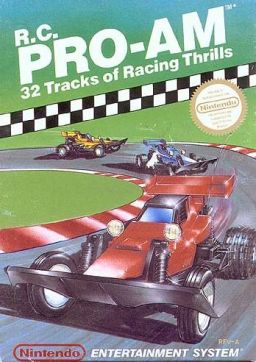
R.C. Pro-Am is a racing game developed by Rare and published by Nintendo for the Nintendo Entertainment System. It was released in North America in February 1988, and then in Europe on April 15. Presented in an overhead isometric perspective, a single player races a radio-controlled car around a series of tracks in vehicular combat. Each track qualifies its top three racers for the next track. Collectible power-up items improve performance, hazards include rain puddles and oil slicks, and missiles and bombs can temporarily disable opponents. Originally titled Pro Am Racing, it was ported to the Sega Genesis in 1992 as Championship Pro-Am, an enhanced remake with enhanced graphics and additional features. R.C. Pro-Am spawned two sequels: Super R.C. Pro-Am in 1991, and R.C. Pro-Am II in 1992.

Rad Racer, known as Highway Star in Japan, is a racing video game developed and published by Square for the Nintendo Entertainment System (NES) in 1987. In this game, players drive a Ferrari 328 or a generic Formula One racing machine through a racecourse. The game was released in North America and Europe months after its debut. The title became well known for being one of two titles from Square that made use of stereoscopic 3D, which was made possible by wearing a pair of anaglyph glasses. Square president Masafumi Miyamoto initially conceived the game as an opportunity for developer Nasir Gebelli to demonstrate his 3D programming skills. Gebelli developed, and often drew by hand, the graphics for the game's 3D mode.

Cyberball is a video game released in arcades in 1988 by Atari Games. The game is a 7-man American football using robotic avatars of different speeds, sizes, and skill sets set in the year 2022. Originally released for arcades, Cyberball was ported to several home consoles and computers.
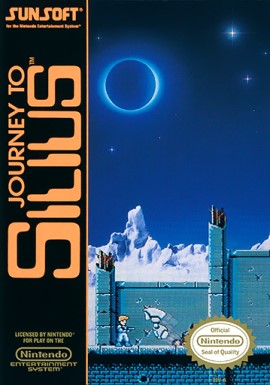
Journey to Silius, known in Japan as Rough World, is a side-scrolling run and gun video game developed and published by Sunsoft for the Nintendo Entertainment System in 1990.

Midnight Club: Street Racing is a 2000 racing video game developed by Angel Studios and published by Rockstar Games. The game focuses on competitive street racing and the import scene. Two distinct versions of the game were released for the PlayStation 2 and Game Boy Advance platforms, the former being a launch title for the platform. It is the first game in Midnight Club franchise, followed by Midnight Club II.

American Video Entertainment, Inc. was an American video game company based in San Jose, California. The company developed unlicensed video games for the Nintendo Entertainment System. The company developed two games on its own, Dudes with Attitude and Trolls on Treasure Island, and published 19 games altogether for the NES.

Batman: Return of the Joker is a 1991 run and gun video game, the follow-up to Sunsoft's first Batman game on the Nintendo Entertainment System. Unlike that game, which was based on the 1989 Batman film directed by Tim Burton, Return of the Joker is entirely self-contained and based more on the modern comic book iteration of Batman, but the Batmobile and the Batwing are featured from the 1989 film. A remake of Return of the Joker, titled Batman: Revenge of the Joker, was released on the Sega Genesis by Ringler Studios in 1992. A Super NES version of Revenge of the Joker was completed but never officially released; a ROM image surfaced online in later years.

G.I. Joe: A Real American Hero is a 1991 run and gun game published by Taxan for the Nintendo Entertainment System based on the toyline of the same name. The game was produced by Ken Lobb and developed by the same Japanese team that later formed KID. A sequel developed by the same team, titled G.I. Joe: The Atlantis Factor, was released the following year, but was published by Capcom after Taxan went out of business.

Adventure Island 3 is a side-scrolling platform game published by Hudson Soft that was originally released for the Nintendo Entertainment System in 1992. It is the third game in the Adventure Island released for the NES, following Adventure Island II. Unlike the first two games in the series, the NES version was never released in Europe. A portable version was also released for the Game Boy in 1993 titled Takahashi Meijin no Bouken Jima III, renamed to Adventure Island II: Aliens in Paradise outside of Japan.

Felix the Cat is a platform video game by Hudson Soft, based on the cartoon character of the same name. It was released for the Nintendo Entertainment System (NES) in 1992, and for the Game Boy in 1993. Although Felix the Cat was developed in Japan, it was only released in North America and Europe.

Cyber Stadium Series—Base Wars is a baseball video game for the Nintendo Entertainment System (NES).
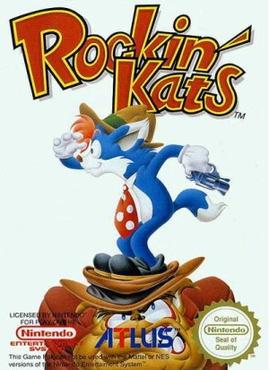
Rockin' Kats is a platform video game produced by Atlus Software Inc. in 1991 for the Nintendo Entertainment System. The side-scrolling game involves the adventures of a cartoon cat in his quest to defeat a criminal gang of dogs that has taken over the city.
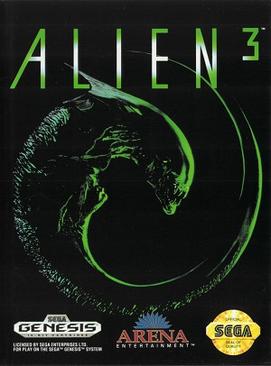
Alien 3 is a run and gun game based on the 1992 film of the same name. It was released for the Genesis and Amiga in 1992, then for the Commodore 64, Game Boy, Game Gear, Nintendo Entertainment System, Super Nintendo Entertainment System, and Master System.

G.I. Joe: The Atlantis Factor is an action-platform video game developed by KID and published by Capcom for the Nintendo Entertainment System. It was released only in North America in 1992. It is the sequel to KID's previous NES G.I. Joe game, G.I. Joe, which was published by Taxan the previous year.

Indiana Jones and the Last Crusade is a 1991 action video game for the NES, developed by Software Creations and published by Taito. The game is based on the 1989 film of the same name.

Formula One: Built to Win is a 1990 racing video game for the Nintendo Entertainment System developed by Winkysoft and published by SETA Corporation.
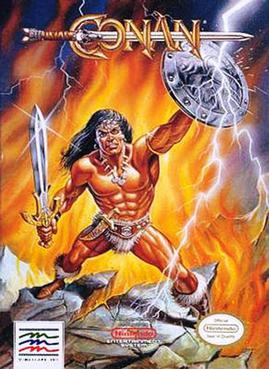
Conan is a side-scrolling action video game for the Nintendo Entertainment System released in 1991. It was developed by Eastridge Technology and published by Mindscape. While it features the Conan the Barbarian character, it is a simple adaptation of a computer game called Myth: History in the Making, which was developed by System 3.
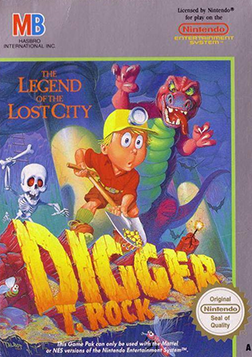
Digger T. Rock: Legend of the Lost City is a platform game developed by Rare and published by the Milton Bradley Company for the Nintendo Entertainment System. It was first released in North America in December 1990 and in Europe in 1991. The game centres around the miner Digger T. Rock, as he spelunks various caves and catacombs whilst searching for the mythical Lost City.
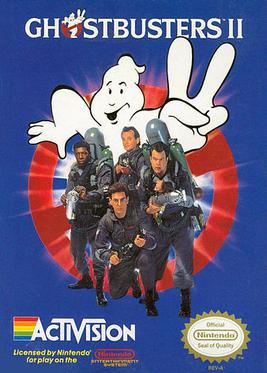
Ghostbusters II is a 1990 action game for the NES, developed by Imagineering and published by Activision. It is based on the 1989 film of the same name, and was released in the United States in April 1990, followed by a United Kingdom release in March 1991.




















